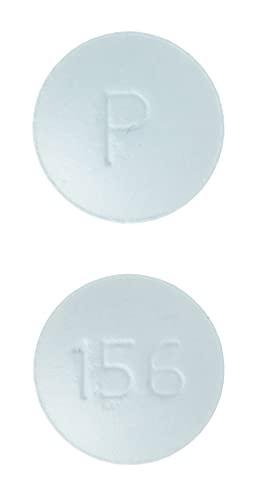Varenicline Tartrate (EENT) (Monograph)
Brand name: Tyrvaya
Drug class: EENT Drugs, Miscellaneous
Introduction
Varenicline is a partial nicotinic acetylcholine receptor agonist of α4β2, α4α6β2, α3β4, and α3α5β4 receptors and a full α7 receptor agonist.
Uses for Varenicline Tartrate (EENT)
Varenicline has the following uses:
Varenicline (nasal solution) is a cholinergic agonist indicated for the treatment of the signs and symptoms of dry eye disease.
Varenicline Tartrate (EENT) Dosage and Administration
General
Varenicline is available in the following dosage form(s) and strength(s):
Nasal spray delivering 0.03 mg of varenicline in each spray (0.05 mL).
Dosage
It is essential that the manufacturer's labeling be consulted for more detailed information on dosage and administration of this drug. Dosage summary:
Adults
Dosage and Administration
-
One spray in each nostril twice daily (approximately 12 hours apart).
-
Prime with seven (7) actuations before initial use. Re-prime with 1 actuation if not used for more than five (5) days.
-
Do not shake.
Cautions for Varenicline Tartrate (EENT)
Contraindications
-
None.
Warnings/Precautions
Specific Populations
Pregnancy
Risk Summary: There are no available data on varenicline use in pregnant women to inform any drug associated risks. In animal reproduction studies, varenicline did not produce malformations at clinically relevant doses.
Animal Data: Pregnant rats and rabbits received varenicline succinate during organogenesis at oral doses up to 15 and 30 mg/kg/day, respectively. While no fetal structural abnormalities occurred in either species, maternal toxicity, characterized by reduced body weight gain, and reduced fetal weights occurred in rabbits at the highest dose (4864 times the MRHD on a mg/m2 basis). In a pre- and postnatal development study, pregnant rats received up to 15 mg/kg/day of oral varenicline succinate from organogenesis through lactation. Maternal toxicity, characterized by a decrease in body weight gain, was observed at 15 mg/kg/day (1216 times the MRHD on a mg/m2 basis). Decreased fertility and increased auditory startle response occurred in offspring at the highest maternal dose of 15 mg/kg/day.
Lactation
Risk Summary: There are no data on the presence of varenicline in human milk, the effects on the breastfed infant, or the effects on milk production. In animal studies varenicline was present in milk of lactating rats. However, due to species-specific differences in lactation physiology, animal data may not reliably predict drug levels in human milk.
The lack of clinical data during lactation precludes a clear determination of the risk of varenicline to an infant during lactation; however, the developmental and health benefits of breastfeeding should be considered along with the mother’s clinical need for varenicline and any potential adverse effects on the breastfed child from varenicline.
Pediatric Use
Safety and efficacy of varenicline in pediatric patients have not been established.
Geriatric Use
No overall differences in safety or effectiveness have been observed between elderly and younger adult patients.
Common Adverse Effects
The most common adverse reaction reported in 82% of patients was sneezing. Events that were reported in 5-16% of patients were cough, throat irritation, and instillation-site (nose) irritation.
Drug Interactions
Specific Drugs
It is essential that the manufacturer's labeling be consulted for more detailed information on interactions with this drug, including possible dosage adjustments. Interaction highlights:
Please see product labeling for drug interaction information.
Actions
Mechanism of Action
The efficacy of varenicline in dry eye disease is believed to be the result of varenicline's activity at heteromeric sub-type(s) of the nicotinic acetylcholine (nACh) receptor where its binding produces agonist activity and activates the trigeminal parasympathetic pathway resulting in increased production of basal tear film as a treatment for dry eye disease. Varenicline binds with high affinity and selectivity at human α4β2, α4α6β2, α3β4, α3α5β4 and α7 neuronal nicotinic acetylcholine receptors. The exact mechanism of action is unknown at this time.
Advice to Patients
-
Advise the patient to read the FDA-approved patient labeling (Patient Information and Instructions for Use).
-
Instruct patients that varenicline works to increase tear production in the eye after being sprayed in the nose.
-
Instruct patients to prime the bottle before using it for the first time by pumping seven (7) sprays into the air away from the face and to re-prime it by pumping 1 spray into the air away from the face if the bottle has not been used in more than five (5) days.
-
Instruct patients to wipe the nasal applicator with a clean tissue after each use.
-
Instruct patients to not shake or freeze the bottle.
Additional Information
AHFSfirstRelease™. For additional information until a more detailed monograph is developed and published, the manufacturer's labeling should be consulted. It is essential that the manufacturer's labeling be consulted for more detailed information on usual uses, dosage and administration, cautions, precautions, contraindications, potential drug interactions, laboratory test interferences, and acute toxicity.
Preparations
Excipients in commercially available drug preparations may have clinically important effects in some individuals; consult specific product labeling for details.
Please refer to the ASHP Drug Shortages Resource Center for information on shortages of one or more of these preparations.
|
Routes |
Dosage Forms |
Strengths |
Brand Names |
Manufacturer |
|---|---|---|---|---|
|
Nasal |
Solution, for intranasal use only |
0.03 mg (of varenicline)/0.05 mL |
Tyrvaya |
Oyster Point Pharma |
AHFS DI Essentials™. © Copyright 2025, Selected Revisions November 10, 2024. American Society of Health-System Pharmacists, Inc., 4500 East-West Highway, Suite 900, Bethesda, Maryland 20814.
Reload page with references included
Related/similar drugs
Frequently asked questions
- What are the best eye drops for dry eyes?
- What is the mechanism of action of Tyrvaya?
- How long does a bottle of Tyrvaya last?
- Does Tyrvaya reduce inflammation?
More about varenicline
- Check interactions
- Compare alternatives
- Pricing & coupons
- Reviews (1,728)
- Drug images
- Side effects
- Dosage information
- During pregnancy
- Drug class: cholinergic agonists
- Breastfeeding

